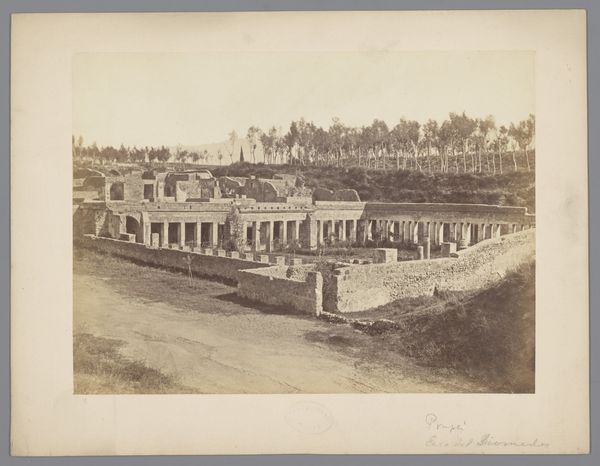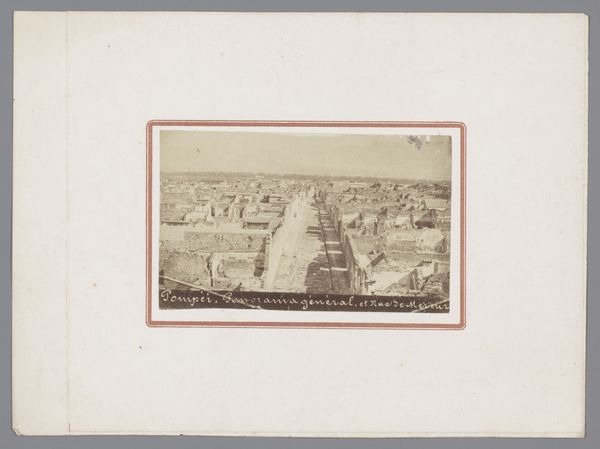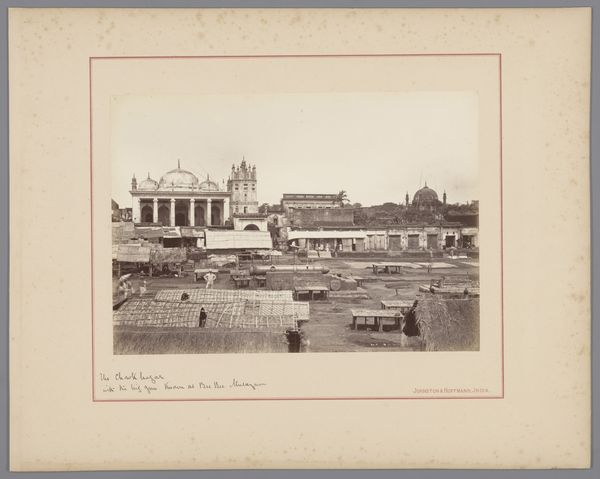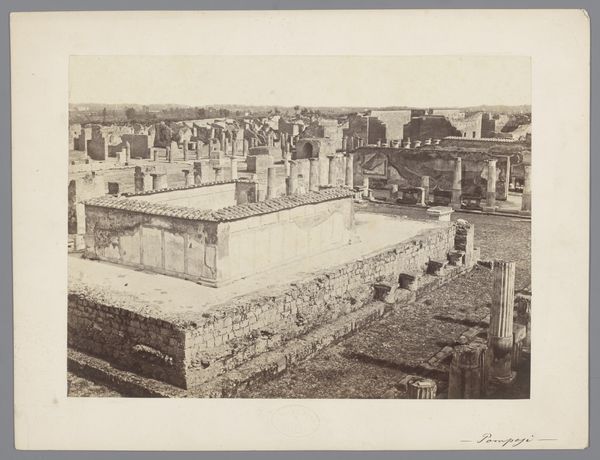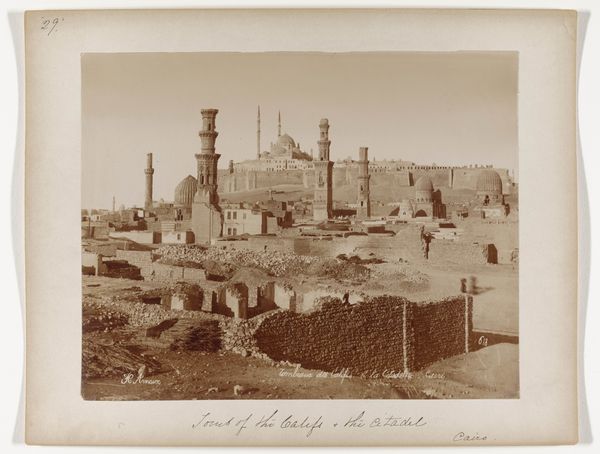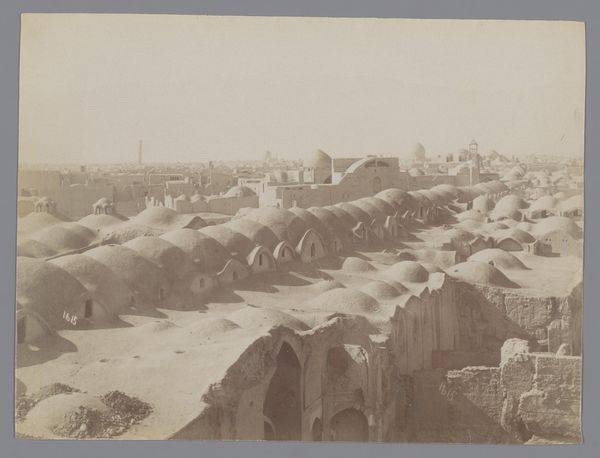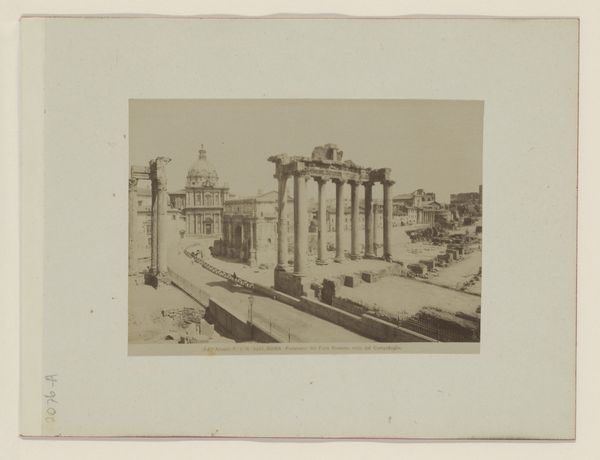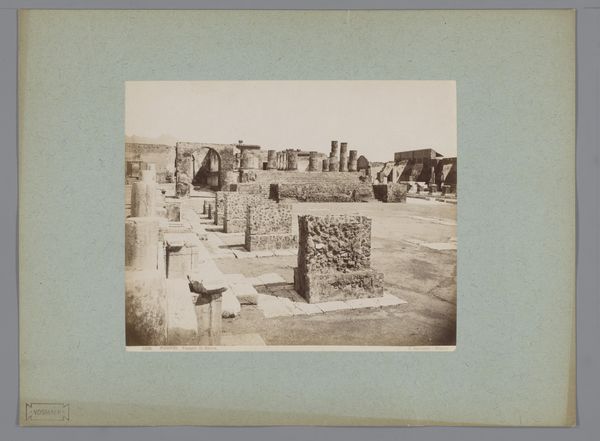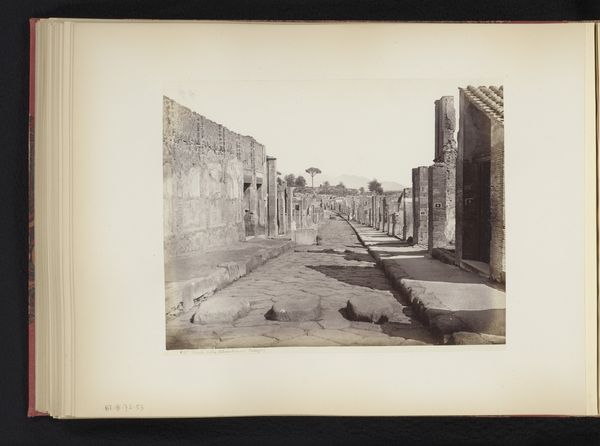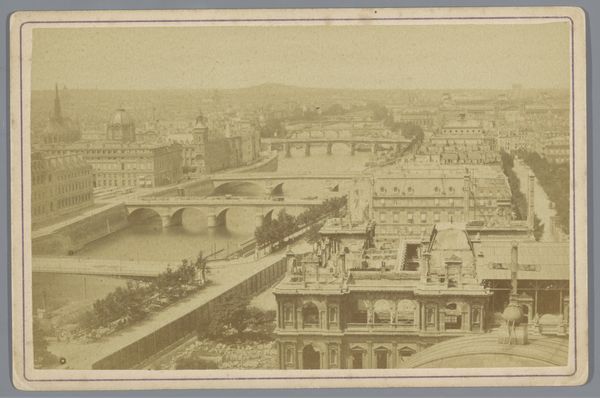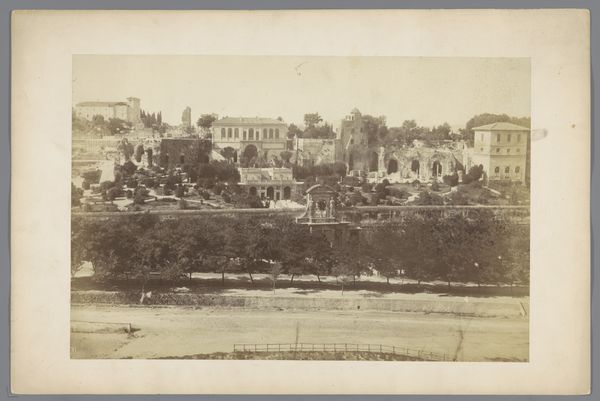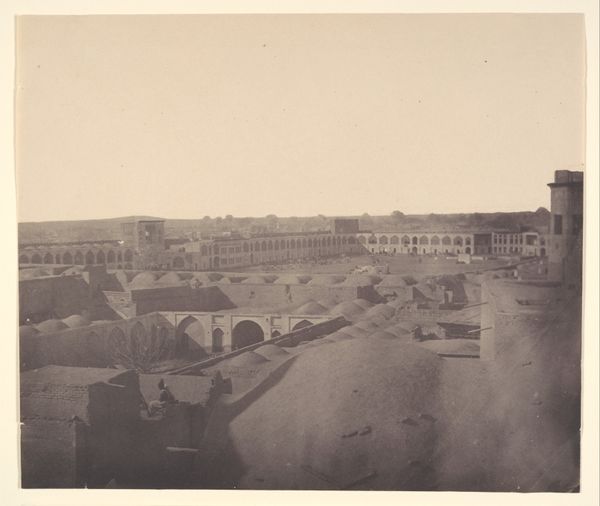
View of the stupas around the Kuthodaw Pagoda in Mandalay, Myanmar 1887 - 1897
0:00
0:00
photography, gelatin-silver-print
#
muted colour palette
#
photo restoration
#
asian-art
#
landscape
#
photography
#
gelatin-silver-print
Dimensions: height 195 mm, width 268 mm, height 238 mm, width 315 mm
Copyright: Rijks Museum: Open Domain
Curator: This gelatin-silver print, created between 1887 and 1897, captures a "View of the stupas around the Kuthodaw Pagoda in Mandalay, Myanmar." It’s the work of Felice Beato, part of the Rijksmuseum collection. Editor: It’s a stunningly symmetrical vista, almost dreamlike with that muted sepia palette. The sheer number of stupas is overwhelming. What stories do these monuments hold? Curator: The stupas themselves represent Buddhist principles. Each one of them contains marble slabs inscribed with teachings from the Tripitaka, the Buddhist scriptures. It’s fascinating to think about how Beato framed this intentional landscape—a human-made echo of natural forms. Editor: Yes, there is an attempt to present a kind of serene order. Given that it was produced during a period of British colonial expansion in Burma, how did images like this function in shaping European perceptions of Southeast Asia? Were they reinforcing or challenging orientalist viewpoints? Curator: I think it's likely complex. On the one hand, the orderliness may have been appealing to colonial sensibilities that valued rational organization, suggesting a kind of exotic yet knowable culture. At the same time, the grandeur might subtly communicate a civilization older and more sophisticated than simple imperial narratives allowed. Editor: The photographer has made a remarkable work in visually ordering, yet perhaps subconsciously, reflecting cultural order from its colonizers. I imagine its presentation also influenced what could be considered cultural knowledge or value. Curator: Indeed, photography played an undeniable role in creating a visual archive of the colonized world, but one cannot help but be drawn by its sheer scale of it and also consider its original purpose. Editor: Seeing it now gives us pause. The photograph preserves this place that we have the opportunity to explore through Beato's careful lens, it's as if a cultural window has been open through this careful depiction. Curator: It provides us with a poignant meditation on preservation and representation, and how these intertwine.
Comments
No comments
Be the first to comment and join the conversation on the ultimate creative platform.
